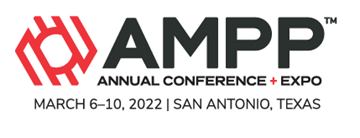Search
AMPP Conference Papers
View as
Sort by
Display
per page
A Comparative Assessment of Environmental Severity Monitoring Techniques
Product Number:
51323-18887-SG
Publication Date:
2023
$20.00
A Comparative Study between Corrosion in Sour Environments Generated by Na2S.9H2O Salt and H2S Gas
Product Number:
51324-20762-SG
Publication Date:
2024
$40.00
A Comparative Study on Coating Performance of Inorganic Zinc Primer System and Inorganic Copolymer System by Long-Term Durability Test Including High Temperature Exposure at 540℃
Product Number:
51323-18820-SG
Publication Date:
2023
$20.00
A comparison among different electrochemical hydrogen charging methods tested on low alloy steels
Product Number:
51323-18866-SG
Publication Date:
2023
$20.00
A Comprehensive Empirical Evaluation of Probabilistic Corrosion Growth Rate Models
Product Number:
51323-18883-SG
Publication Date:
2023
$20.00
A Damage-Based Approach and Predictive Modeling of Corrosion in Substrate/Coating Systems Using Artificial Neural Networks
Product Number:
51324-21150-SG
Publication Date:
2024
$40.00
A Data Driven Approach to Improving Suitability of External Corrosion Risk Algorithm for Pipelines with Unique Operating Conditions – A Case Study of Hot Bitumen Pipelines
Product Number:
51323-19170-SG
Publication Date:
2023
$20.00
A Data-Driven Approach to Predicting Oxidation Rate Constants For Alloys
Product Number:
51323-19412-SG
Publication Date:
2023
$20.00
A decision support tool for best coating selection during trenchless pipe installation
Product Number:
51323-18849-SG
Publication Date:
2023
$20.00
A Disposable Electrochemical Biofilm/MIC Test Kit to Detect MIC and to Assess Efficacy of Biocide Treatment of Biofilm
Product Number:
51324-20887-SG
Publication Date:
2024
$40.00
A Fracture Mechanics Approach To Characterizing Hydrogen Embrittlement Of Fasteners
Product Number:
51321-16798-SG
Publication Date:
2021
$20.00
A Further Look At The Impacts Of Corrosion Inhibitor On Scale Prevention
Product Number:
51322-17676-SG
Publication Date:
2022
$20.00












